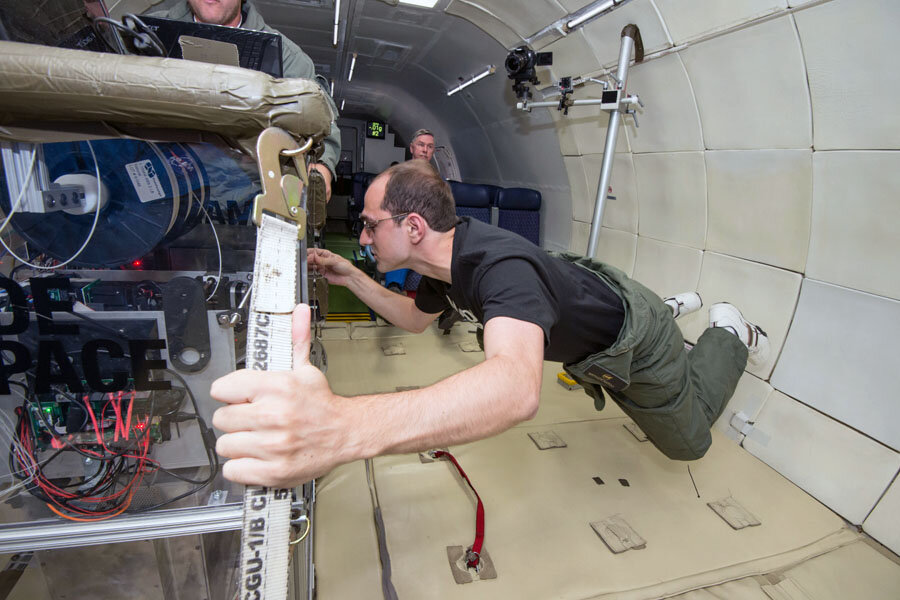Attention, Star Trek fans: 3-D printer headed to space station
By clearing a 3-D printer for launch to the International Space Station (ISS), NASA may have taken a step closer to the "Star Trek" world of “replicators” and self-sustainability on the station.
In the Star Trek universe, a Replicator could make food, machine parts, clothing, or other objects by using transporter technology to dematerialize matter and then rematerialize that matter in another form.
While the company behind the 3-D printer, Made In Space, isn’t exactly handing astronauts a magic box, this device is boldly going into zero gravity, where no 3-D printer has gone before.
3-D printing is an innovative process whereby an object is built up layer by layer using printing technology or lasers. Some 3-D printers can extrude plastic, metals, ceramic powder, and many other materials.
The Made In Space 3-D Printer is geared to handle the challenges of space and builds objects layer by layer out of polymers and other materials, according to a press release from Made In Space.
The 3-D printer is designed specifically to function in zero gravity to produce spare parts, crew tools, and components for cubesats, a mini satellite for research, according to the press release.
The first printer will reach the space station in September, after an August launch aboard SpaceX CRS-4.
If this tech lives up to expectations, it will also be a fail-safe for the station and a source of extra-terrestrial industry.
“Think of Apollo 13 when parts failed,” Lowery says. Rather than a McGuyver fix, the crew aboard the ISS could 3-D print what they need, when they need it. “No more duct tape, or square pegs into round holes in a panic,” he says.
This also saves on shipping costs to make the station less dependent on resupply trips, remove the need for shipping redundancies, and, in the process, makes deeper space exploration more feasible.
It's a joy to every Trekkie each time technology meets a sci-fi benchmark, and this seems to be one of those times.
“Because this felt so much like a 'Star Trek' development, we recently had Rod Roddenberry, son of 'Star Trek' creator Gene Roddenberry, here to see our printer recently, for that very reason,” says Grant Lowery, marketing and communication manager for Made In Space, which is partnering with NASA to bring a 3-D printer to the space station.
What did Mr. Roddenberry have to say about this latest advancement in space station tech?
“Tea. Earl Grey. Hot,” is what he said directly to one of the printers, according to Mr. Lowery. “It was an amazing moment for everyone on the project.”
If the printer performs well in this initial test, the ISS will welcome a second, larger model in 2015 and establish a permanent 3-D printing station called the Additive Manufacturing Facility, according to Lowery.
Made In Space and NASA hope to create a commercial partnership with businesses that want to have their products 3-D manufactured aboard the ISS.
“If you want to build a satellite, you would e-mail your [design] files, which we would of course modify and then print your satellite to order,” Lowery says. “No more waiting months while it’s built on Earth and then launched into space. When it’s built on the space station, they will just release the satellite.”
It’s still a long way from “Tea. Earl Grey. Hot,” but it would seem that it’s getting bigger in the window of possibility.






